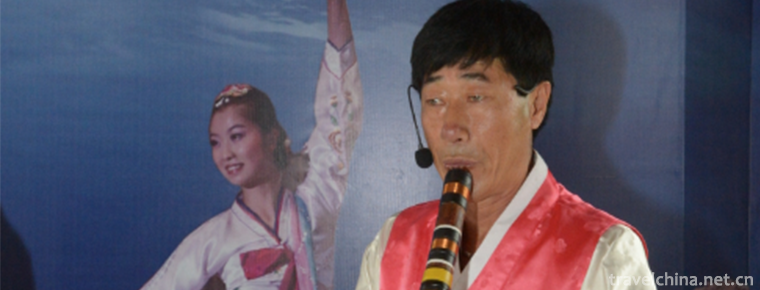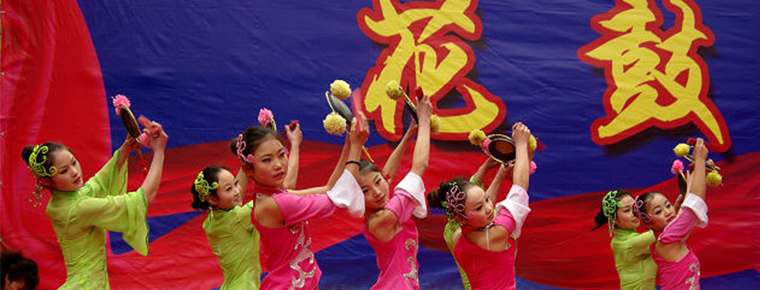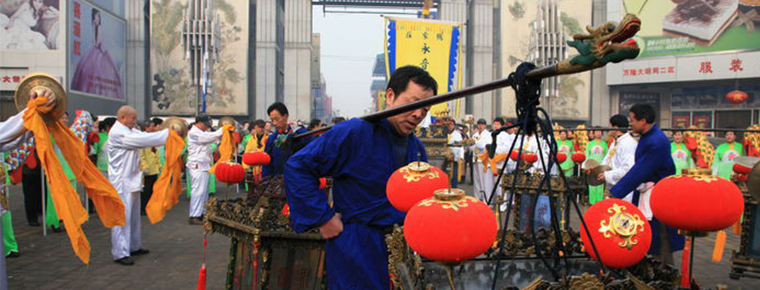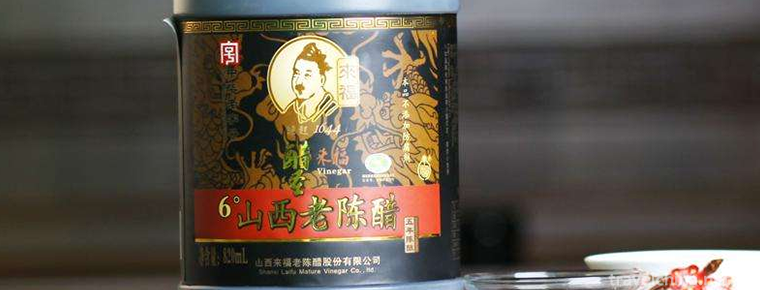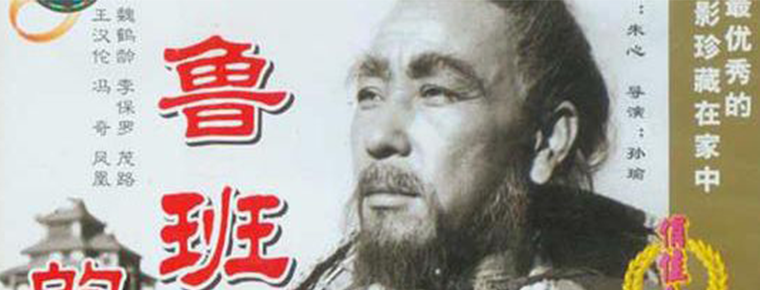Xingshan Folk Song
Xingshan Folk Song
Xingshan folk song is called "Xingshan folk song" because of its unique "Xingshan three-degree interval".
On May 20, 2006, Xingshan Folk Song was approved by the State Council to be included in the first batch of national intangible cultural heritage list.
historical origin
Through scientific research, Xingshan folk songs have a clear history of more than 800 years. It can be inferred that the rhythm of this song has been spreading for more than 900 years. Liu Yuxi's "Children's Union Song in Jianping Listening" says, "Listen to its sound, the feather of Zhonghuang Bell" can trace its history back to the Middle Tang Dynasty. Consistent with the structure of Zeng Houyi's third law of bell chimes, its historical origin can be traced back to more than 2400 years ago. In particular, the three sound structure of Shang and Zhou bronze "pig chimes" unearthed in 1992 is almost the same as that of Xingshan's three degree three tune folk songs, which also provides strong evidence for its long history.
artistic characteristics
Xingshan ancient song has a peculiar tone, no classics, no pitch, no mode, and no easy singing. In fact, it contains an interval between big and small three degrees in the scale structure, which is named "Xingshan third degree interval". This unique scale proves that there exists an oral culture in Jingchu music culture consistent with the rules found in the archaeological discovery of musical instruments.
The singularity of Xingshan folk song lies not only in its tone's auditory effect, but also in its unique aesthetic sentiment. Xingshan folk songs always give the feeling of "foreigners" is "sadness", which makes people feel that it is "the tone of crying for the dead".
From Emperor Wudi's Liyuefu in Han Dynasty to Taizong's elegant music in Tang Dynasty, there are records of "sadness" and "sadness" in Chu Yin. All descriptions of the tones of bamboo branch songs are singing "sadness and despair" in a thousand voices without exception. Today, people also think that Xingshan folk song "Sound and Sorrow". In fact, this kind of understanding is quite different from the Chu people's feeling - - the Chu people take this sound as their pleasure! It's just that people in different regions have different aesthetic psychology. The so-called "anti-sadness" is "happiness", which is the aesthetic characteristics of Jingchu ancient songs.
Xingshan folk song reveals the original appearance of Jingchu ancient song, provides irrefutable evidence that Chinese traditional music has not been lost, and proves the tenacious vitality and stable heredity of Chinese traditional music.
Representative Works
There are "Zhengdong", "Zhengxi", "Xue Gang's Anti-Tang", "Shishou", "Shixiang", "Wugeng" and so on.
Inheritance Significance
The main value of Xingshan folk song lies in: Xingshan ancient song has been passed down in a lost voice, which proves the tenacious vitality of our traditional music; proves that our country has unique local music; reveals the appearance of Jingchu ancient song; and the unique principle of music rhythm will enrich our country's music theory and fill in the blank of world music theory. It proves that in the practice of Chinese folk art, there exists a law principle consistent with the unearthed musical instruments; reveals that the interval of about 350 notes is a long-standing and objective conventional interval in Chinese national music; witnesses the persistence and scientificity of the folk singing method of "chicken song"; as a cultural link, it helps me. The identification of multi-ethnic cultures in the south of China will promote cultural exchanges and strengthen national unity.
Xingshan Folk Song is a precious relic of Bachu Ancient Song. It overthrows the "Chinese Music for the West", which proves that Chinese Ancient Music is not lost, and that China also has its own academic controversy about local music. Its unique principles of music rhythm have a very high learning for studying the history of ancient music and the inheritance and variation of Chinese traditional folk songs. Surgical value.
Like all living fossils, this ancient art is in danger of extinction. First, because it is not known, people do not know the pitch, mode, notation, it is difficult to learn to sing. Moreover, with the development of production, weed has been replaced by modern weeding technology in the countryside. The reason why Xingshan folk songs can be spread in Xingshan is that they rely on grass gongs and drums as carriers. Once the grass gongs and drums die out completely, Xingshan folk songs will be absolutely resounding.
Xingshan folk song mainly exists in the two carriers of Xingshan grass Gong and drum and Xingshan funeral drum, especially the grass Gong and drum is the most typical. However, with the development of the times, the grass Gong and drum in Xingshan have almost disappeared in the production of labor. 90% of the folk artists who have not died of grass Gong and drum are over 70 years old. Their inheritance and protection situation is worrying. If not rescued and protected, this unique song will be in danger of losing its heritage.
Current situation of inheritance
Xingshan folk song has been handed down for thousands of years. It is difficult to sing because of its indistinguishability of tone, intonation and notation. For thousands of years, it has been handed down by word of mouth. Although this song has been protected by non-relics, it is in danger of extinction.

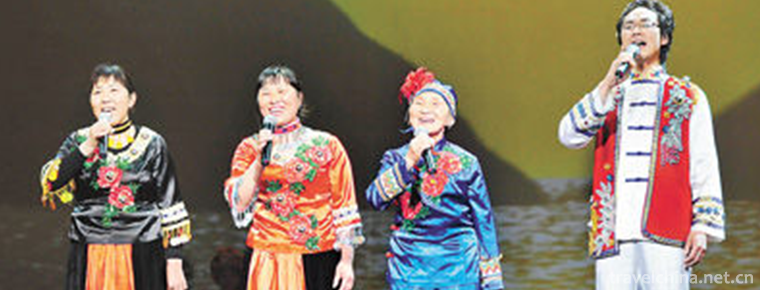
-
stired egg and tomato
Scrambled eggs with tomatoes, also known as tomato scrambled eggs, is a common popular dish among many people's families. The cooking method is simple and easy to learn, and the nutrition is reasonabl.
Views: 208 Time 2018-10-27 -
Privacy Policy
We takes users' information safety and privacy as our lifeline. Based on our basic principle "Users' needs are our first priority", we are committed to enhancing the transparency of informat.
Views: 1664 Time 2018-12-08 -
Kanas Scenic Area in Altay Area
Kanas Scenic Area is located in the middle section of Altai Mountain in Xinjiang, which is located in the border area between China and Kazakhstan, Russia and Mongolia.
Views: 108 Time 2018-12-12 -
Jiahe City Hot Spring Valley
Jiahe City Hot Spring Valley is located in Jiahe City, Nanwu Avenue, northeast of Nanning City. It is about 13 kilometers away from Nanning International Convention.
Views: 378 Time 2019-01-21 -
Korean Dongxiao Music
The Koguryo History Music Records records that Dongxiao belonged to the musical instruments of the Tang Dynasty in China. During the period of Shizong in the Li Dynasty.
Views: 126 Time 2019-04-16 -
Hua gu deng Flower drum lantern
Flower drum lantern, a traditional dance in Bengbu City, Fengtai County and Yingshang County, Anhui Province, is one of the national intangible cultural heritage..
Views: 233 Time 2019-05-04 -
Jin men drum
Jinmen Fagu is a local traditional music and dance art in Tianjin, which appears in the form of performances of the Lao Hui or the Sacred Congregation. In June 2008,.
Views: 137 Time 2019-05-07 -
Brewing Techniques of Old Vinegar
Qingxu old vinegar brewing skills, Shanxi Province Qingxu County local traditional skills, one of the national intangible cultural heritage..
Views: 125 Time 2019-05-11 -
Legend of Luban
productivity and the change of production tools have created conditions for the improvement of technology..
Views: 238 Time 2019-05-15 -
Gesala Ecotourism Area
Gesala eco-tourism area is located in Yankou Township, walai Township, Wenquan Township and Qinghe Township in the northwest of Yanbian County, Panzhihua City. It is located at the junction of Sichuan Province and Yunnan Province..
Views: 365 Time 2020-10-15 -
Environmental protection in Mianyang
In 2018, the water quality of Fujiang, Kaijiang, Zijiang, Anchang River, Furong River, Tongkou River and Luban reservoir in Mianyang City accounted for 100% of the total water quality. Among them, Fujiang River, Tongkou River, Zijiang River and Anchang.
Views: 343 Time 2020-12-14 -
Neijiang administrative division
Neijiang City governs 5 county-level administrative divisions (Municipal District 2, county-level city 1, county-2), and 83 township level administrative divisions (street 13, town 70). It covers an area of 5386 square kilometers and has a population of 4.27 million..
Views: 158 Time 2020-12-16




